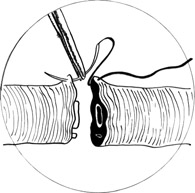
Microsurgery
1973
pioneering techniques and instruments for microsurgery
Microsurgery began in the early 1950s, when a specialised microscope was invented that made it possible for surgeons to reconnect blood vessels and muscle tissue. Today, the Microsearch Foundation in Sydney leads the world in microsurgery.
After ten years of research Dr Earl Owen opened the Microsearch Foundation in 1973. Since then surgeons associated with the foundation have performed many pioneering operations, including the first successful re-attachment of an amputated finger, on a two-year-old child in 1968.
Other world firsts include the development of reliable methods to restore fertility to men and women who have natural blockages in the tiny tubes of their reproductive systems, or who have been sterilised surgically. In 1998 Professor Owen in conjunction with Professor Dubernard of France and an international team performed the world?s first hand transplant, which aroused considerable controversy.
The Microsearch Foundation researches original ideas in microsurgery, develops new techniques and instruments, and teaches Australian and overseas surgeons in its Sydney headquarters. One interesting spin-off from Owen's work is his design for an ergonomically correct upholstered chair for micro-surgeons to use during lengthy operations. It's so comfortable that the chair is used for orchestra members at the Sydney Opera House and the cushion design is used for the audience?s seats.
Who Did It?
Key Organisations
Microsearch Foundation of Australia : R&D, design, teaching
Microsurgery Research Centre : research, training
Key People
Earl Owen : developed techniques
David Vickers : helped design
instruments
Bernard O?Brien : developed techniques
Further Reading
The dictionary of Australian inventions and discoveries
Margaret McPhee
Allen & Unwin, St Leonards, NSW, 1993, pp 81-82
Links
Prof Earl Owen
and Microsearch Foundation of Australia
Canadian
microsurgery historyQuestions & Activities
Microsurgery
|










